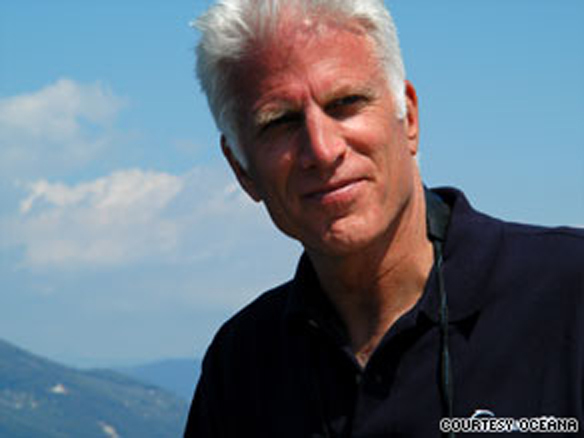Although he was born in San Diego, California, Ted grew up away from the sea in Arizona. He received his Bachelor of Fine Arts degree in drama, in 1972 and moved to Los Angeles in 1978 to train with Dan Fauci at the famous Actor’s Institute.
His career began in television in commercials and soaps until his most famous casting in 1982 as the former baseball player and bartender in Cheers. The show ran for 11 seasons until May 20, 1993 when the finale was watched by 80 million people, becoming the second most watched finale in television history.
As a protégé of the head of NBC entertainment Brandon Tartikoff, Ted appeared in a tribute to him after his death in 1997. He has said that he owes everything he has to Tartikoff.
Popular with audiences who connect with his easy manner, he is a relationship builder who makes friends for life.
He cares deeply about the environment, as the son of an archeologist and anthropologist, he says he grew up conscious of legacy and the lasting impact we have on the earth.
It was during his time filming Cheers in Santa Monica that he became aware of Ocean pollution. He took his daughter to the beach and couldn’t explain to her why they couldn’t swim in the Ocean. It was after a meeting with the environmental lawyer Bob Sulnick that Ted became involved in a movement to prevent digging for oil wells in Santa Monica. Following the success of the movement, he helped to create the American Oceans Campaign in 1987, which became Oceana in 2001.
Since those early campaigning years Ted has been an Ocean Advocates, appearing in Public Service Announcements, appealing to donors and testifying to the Government on the Condition of the World’s Oceans.
In 1988, he said we had 10 years to save the oceans or we would pay the consequences, many people believe he was right.
He currently sits on Oceana’s Board of Directors where he and his wife, actress Mary Steenburgen, continue to campaign.
He believes that by restoring and strengthening natural marine systems, we can help feed people far into the future. It’s a win/win situation. We simply need to put in place smart, low-cost, science-based policies on national levels that protect wild fish.
In February 2014 it was announced that Oceana was awarded a grant from the proceeds of Leonardo Di Caprio’s 11th Hour Auction at Christie’s.
Washington, DC – Oceana, the largest international advocacy group to work on behalf of the world’s oceans, announced a $3 million grant today from the Leonardo DiCaprio foundation aimed at protecting threatened ocean habitat and keystone marine species such as sharks. The foundation’s grant will also support Oceana’s work to advocate for responsible fishing measures, including the effort to ban California drift gillnets.
“The foundation and Leo’s support for campaigns like our efforts to ban the drift gillnets in California will help Oceana win more protections for countless sharks and other marine animals and for ocean habitats in the Pacific and Arctic – which include some of the most productive ocean places in the world,” said Oceana CEO Andy Sharpless. “The net impact will be a much more abundant and biodiverse ocean that has many millions more sharks and critical and amazing marine animals, wilder and more pristine ocean habitats and oceans that can feed over a billion people – many of them hungry – a healthy seafood meal each day.”
“Protecting our planet’s oceans and the marine species that call it home is one of the most pressing sustainability crises facing humanity today and a moral imperative that we must acknowledge,” DiCaprio said. “It’s my hope that this grant will help Oceana continue the tremendous work that they do daily on behalf of our oceans.”
“We are incredibly grateful to our friends at Christie’s who made last year’s 11th Hour Auction for the foundation such a success, they made this grant to Oceana possible,” said Justin Winters, Executive Director of the Leonardo DiCaprio Foundation. “We are excited to support Oceana’s efforts to win real policy change and protection for vital habitats and species throughout the Pacific and Arctic oceans.”

